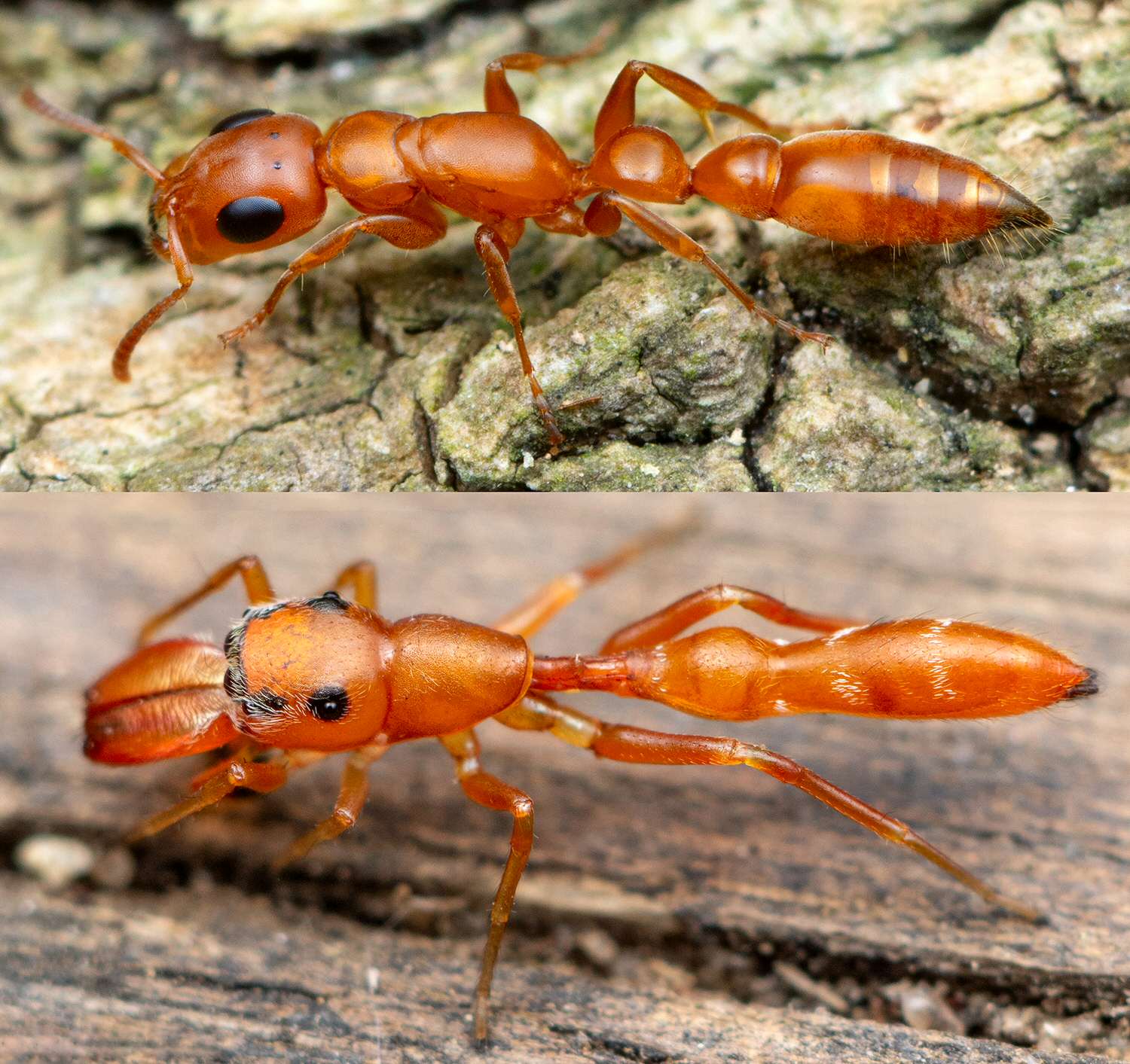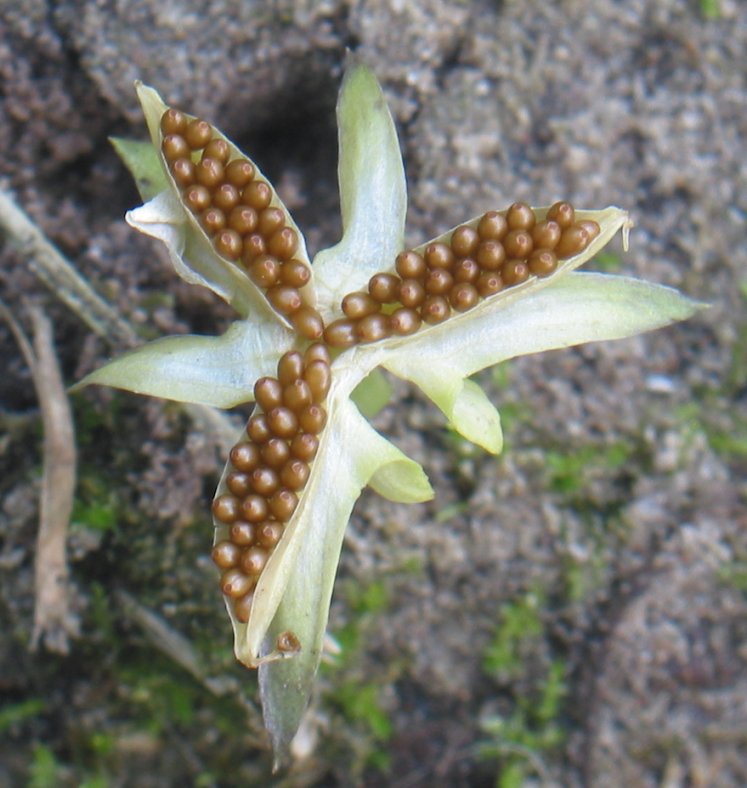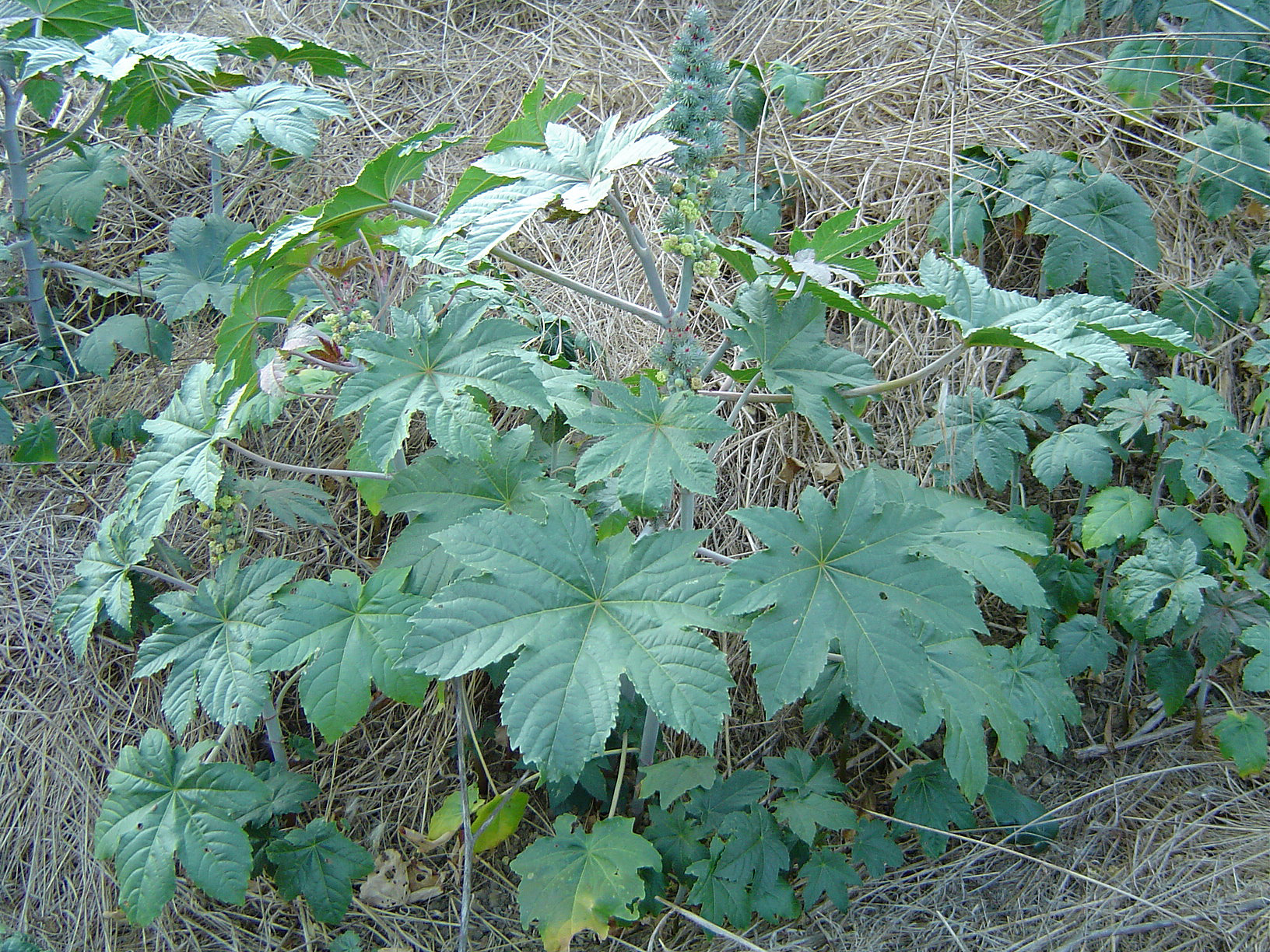|
Elaiosome
Elaiosomes ( grc, ἔλαιον ''élaion'' "oil" + ''sóma'' "body") are fleshy structures that are attached to the seeds of many plant species. The elaiosome is rich in lipids and proteins, and may be variously shaped. Many plants have elaiosomes that attract ants, which take the seed to their nest and feed the elaiosome to their larvae. After the larvae have consumed the elaiosome, the ants take the seed to their waste disposal area, which is rich in nutrients from the ant frass and dead bodies, where the seeds germinate. This type of seed dispersal is termed myrmecochory from the Greek "ant" (myrmex) and "circular dance" (khoreíā). This type of symbiotic relationship appears to be mutualistic, more specifically dispersive mutualism according to Ricklefs, R.E. (2001), as the plant benefits because its seeds are dispersed to favorable germination sites, and also because it is planted (carried underground) by the ants. Elaiosomes develop in various ways either from seed ti ... [...More Info...] [...Related Items...] OR: [Wikipedia] [Google] [Baidu] |
Myrmecochory
Myrmecochory ( (sometimes myrmechory); from grc, μύρμηξ, mýrmēks ("ant") and ''khoreíā'' ("circular dance") is seed dispersal by ants, an ecologically significant ant–plant interaction with worldwide distribution. Most myrmecochorous plants produce seeds with elaiosomes, a term encompassing various external appendages or "food bodies" rich in lipids, amino acids, or other nutrients that are attractive to ants. The seed with its attached elaiosome is collectively known as a diaspore. Seed dispersal by ants is typically accomplished when foraging workers carry diaspores back to the ant colony, after which the elaiosome is removed or fed directly to ant larvae. Once the elaiosome is consumed, the seed is usually discarded in underground middens or ejected from the nest. Although diaspores are seldom distributed far from the parent plant, myrmecochores also benefit from this predominantly mutualistic interaction through dispersal to favourable locations for germina ... [...More Info...] [...Related Items...] OR: [Wikipedia] [Google] [Baidu] |
Trillium
''Trillium'' (trillium, wakerobin, toadshade, tri flower, birthroot, birthwort, and sometimes "wood lily") is a genus of about fifty flowering plant species in the family Melanthiaceae. ''Trillium'' species are native to temperate regions of North America and Asia, with the greatest diversity of species found in the southern Appalachian Mountains in the southeastern United States. Description Plants of this genus are perennial herbs growing from rhizomes. There are three large leaf-like bracts arranged in a whorl about a scape that rises directly from the rhizome. There are no true aboveground leaves but sometimes there are scale-like leaves on the underground rhizome. The bracts are photosynthetic and are sometimes called leaves. The inflorescence is a single flower with three green or reddish sepals and three petals in shades of red, purple, pink, white, yellow, or green. At the center of the flower there are six stamens and three stigmas borne on a very short style, if any ... [...More Info...] [...Related Items...] OR: [Wikipedia] [Google] [Baidu] |
Seed
A seed is an embryonic plant enclosed in a protective outer covering, along with a food reserve. The formation of the seed is a part of the process of reproduction in seed plants, the spermatophytes, including the gymnosperm and angiosperm plants. Seeds are the product of the ripened ovule, after the embryo sac is fertilized by sperm from pollen, forming a zygote. The embryo within a seed develops from the zygote, and grows within the mother plant to a certain size before growth is halted. The seed coat arises from the integuments of the ovule. Seeds have been an important development in the reproduction and success of vegetable gymnosperm and angiosperm plants, relative to more primitive plants such as ferns, mosses and liverworts, which do not have seeds and use water-dependent means to propagate themselves. Seed plants now dominate biological niches on land, from forests to grasslands both in hot and cold climates. The term "seed" also has a general me ... [...More Info...] [...Related Items...] OR: [Wikipedia] [Google] [Baidu] |
Sanguinaria Canadensis
''Sanguinaria canadensis'', bloodroot, is a perennial, herbaceous flowering plant native to eastern North America. It is the only species in the genus ''Sanguinaria'', included in the poppy family Papaveraceae, and is most closely related to ''Eomecon'' of eastern Asia. ''Sanguinaria canadensis'' is sometimes known as Canada puccoon, bloodwort, redroot, red puccoon, and black paste. Plants are variable in leaf and flower shape, and have been separated as a different subspecies due to these variable shapes, indicating a highly variable species. In bloodroot, the juice is red and poisonous. Products made from sanguinaria extracts, such as black salve, are escharotic and can cause permanent disfiguring scarring. Although preliminary studies have suggested that sanguinaria may have potential applications in cancer therapy, clinical studies are lacking, and its use is not recommended. Description Bloodroot grows from tall. It has one large basal leaf, up to across, with five t ... [...More Info...] [...Related Items...] OR: [Wikipedia] [Google] [Baidu] |
Ant Mimicry
Ant mimicry or myrmecomorphy is mimicry of ants by other organisms. Ants are abundant all over the world, and potential predators that rely on vision to identify their prey, such as birds and wasps, normally avoid them, because they are either unpalatable or aggressive. Spiders are the most common ant mimics. Additionally, some arthropods mimic ants to escape predation (protective mimicry), while others mimic ants anatomically and behaviourally to hunt ants in aggressive mimicry. Ant mimicry has existed almost as long as ants themselves; the earliest ant mimics in the fossil record appear in the mid Cretaceous alongside the earliest ants. Indeed one of the earliest, ''Burmomyrma'', was initially classified as an ant. In Wasmannian mimicry, mimic and model live commensally together; in the case of ants, the model is an inquiline in the ants' nest. Wasmannian mimics may also be Batesian or aggressive mimics. To simulate ants' powerful defences, mimics may imitate ants chemically w ... [...More Info...] [...Related Items...] OR: [Wikipedia] [Google] [Baidu] |
Convergent Evolution
Convergent evolution is the independent evolution of similar features in species of different periods or epochs in time. Convergent evolution creates analogous structures that have similar form or function but were not present in the last common ancestor of those groups. The cladistic term for the same phenomenon is homoplasy. The recurrent evolution of flight is a classic example, as flying insects, birds, pterosaurs, and bats have independently evolved the useful capacity of flight. Functionally similar features that have arisen through convergent evolution are ''analogous'', whereas '' homologous'' structures or traits have a common origin but can have dissimilar functions. Bird, bat, and pterosaur wings are analogous structures, but their forelimbs are homologous, sharing an ancestral state despite serving different functions. The opposite of convergence is divergent evolution, where related species evolve different traits. Convergent evolution is similar to parallel evo ... [...More Info...] [...Related Items...] OR: [Wikipedia] [Google] [Baidu] |
Viola (plant)
''Viola'' is a genus of flowering plants in the violet family Violaceae. It is the largest genus in the family, containing between 525 and 600 species. Most species are found in the temperate Northern Hemisphere; however, some are also found in widely divergent areas such as Hawaii, Australasia, and the Andes. Some ''Viola'' species are perennial plants, some are annual plants, and a few are small shrubs. Many species, varieties and cultivars are grown in gardens for their ornamental flowers. In horticulture the term pansy is normally used for those multi-colored, large-flowered cultivars which are raised annually or biennially from seed and used extensively in bedding. The terms viola and violet are normally reserved for small-flowered annuals or perennials, including the wild species. Description Annual or perennial caulescent or acaulescent (with or without a visible plant stem above the ground) herbs, shrubs or very rarely treelets. In acaulescent taxa the foliage and flower ... [...More Info...] [...Related Items...] OR: [Wikipedia] [Google] [Baidu] |
Ricinus Communis
''Ricinus communis'', the castor bean or castor oil plant, is a species of perennial flowering plant in the spurge family, Euphorbiaceae. It is the sole species in the monotypic genus, ''Ricinus'', and subtribe, Ricininae. The evolution of castor and its relation to other species are currently being studied using modern genetic tools. It reproduces with a mixed pollination system which favors selfing by geitonogamy but at the same time can be an out-crosser by anemophily (wind pollination) or entomophily (insect pollination). Its seed is the castor bean, which, despite its name, is not a bean (that is, the seed of many Fabaceae). Castor is indigenous to the southeastern Mediterranean Basin, Eastern Africa, and India, but is widespread throughout tropical regions (and widely grown elsewhere as an ornamental plant). Castor seed is the source of castor oil, which has a wide variety of uses. The seeds contain between 40% and 60% oil that is rich in triglycerides, mainly ricinolei ... [...More Info...] [...Related Items...] OR: [Wikipedia] [Google] [Baidu] |
Dicentra
''Dicentra'' (Greek ''dís'' "twice", ''kéntron'' "spur"), known as bleeding-hearts, is a genus of eight species of herbaceous plants with oddly shaped flowers and finely divided leaves, native to eastern Asia and North America. Description Flowers have two tiny sepals and four petals. The flowers are bisymmetric: the two outer petals are spurred or pouched at the base and curved outwards or backwards at the tip, and the two inner ones with or without a crest at the tip. In ''Dicentra'', all leaves are in a basal rosette, and flowers are on leafless stalks. In other genera with bisymmetric heart-shaped flowers (''Lamprocapnos'', ''Dactylicapnos'', ''Ichtyoselmis'', ''Ehrendorferia''), leaves grow on stems as well as from the root. Each of the two compound stamens is composed of one median and two lateral half stamens fused together. The stamens and pistil are held between the inner petals. Seeds with elaiosomes are borne in long capsules. All parts are poisonous if ingested ... [...More Info...] [...Related Items...] OR: [Wikipedia] [Google] [Baidu] |
Cnidoscolus Urens
''Cnidoscolus urens'' is a perennial, tropical American stinging herb of the family Euphorbiaceae, and is one of some 100 species belonging to the genus ''Cnidoscolus'' (Gk. knidē-nettle, skōlos-thorn, Latin urens-burning). The plant is locally known as 'bull nettle', 'spurge nettle', 'bringamosa' and 'mala mujer' (evil woman). This species has an erect stem and is herbaceous when young, turning woody with age and from 50 to 150 centimeters tall. Leaves are lobed and large, while the white flowers occur in cymes, producing a spiny 3-seeded capsule with seeds rich in fats and proteins, resembling those of '' Ricinus communis''. Its carunculate seeds are usually dispersed by ants (myrmecochory) attracted by the edible elaiosome. The entire plant is covered in stinging hairs, and has a native range covering Central and South America, being found in Costa Rica, El Salvador, Guatemala, Honduras, Mexico, Nicaragua, Panama, Peru and Venezuela. ''Cnidoscolus urens'' is monoecious and ... [...More Info...] [...Related Items...] OR: [Wikipedia] [Google] [Baidu] |
Chelidonium Majus
''Chelidonium majus'', the greater celandine, is a perennial herbaceous flowering plant in the poppy family Papaveraceae. One of two species in the genus ''Chelidonium'', it is native to Europe and western Asia and introduced widely in North America. The plant known as lesser celandine (''Ficaria verna'') is not closely related, as it belongs to the buttercup family Ranunculaceae. Description Greater celandine is a perennial herbaceous plant with an erect habit, and reaches high. The blue-green leaves are pinnate with lobed and wavy margins, up to long. When injured, the plant exudes a yellow to orange latex. The flowers consist of four yellow petals, each about long, with two sepals. A double-flowered variety occurs naturally. The flowers appear from late spring to summer, May to September (in the UK), in umbelliform cymes of about 4 flowers. The seeds are small and black, borne in a long, cylindrical capsule. Each has an elaiosome, which attracts ants to disperse the s ... [...More Info...] [...Related Items...] OR: [Wikipedia] [Google] [Baidu] |
Caruncle Euphorbiaceae
Caruncle (from Latin: ''caruncula'', 'wart') may refer to: * Caruncle (bird anatomy), a small, fleshy excrescence that is a normal part of an animal's anatomy * Caruncle, an elaiosome (fleshy structure attached to the seed), especially in the plant family Euphorbiaceae * Caruncle, an appendage to the prostomium of a worm's body * Sublingual caruncle, an area on the human tongue * Lacrimal caruncle The lacrimal caruncle, or caruncula lacrimalis, is the small, pink, globular nodule at the inner corner (the medial canthus) of the eye. It consists of tissue types of neighbouring eye structures. It may suffer from lesions and allergic inflammati ..., the nodule at the inner corner of the human eye * Urethral caruncle, a benign outgrowth of the urethra {{disambiguation ... [...More Info...] [...Related Items...] OR: [Wikipedia] [Google] [Baidu] |







